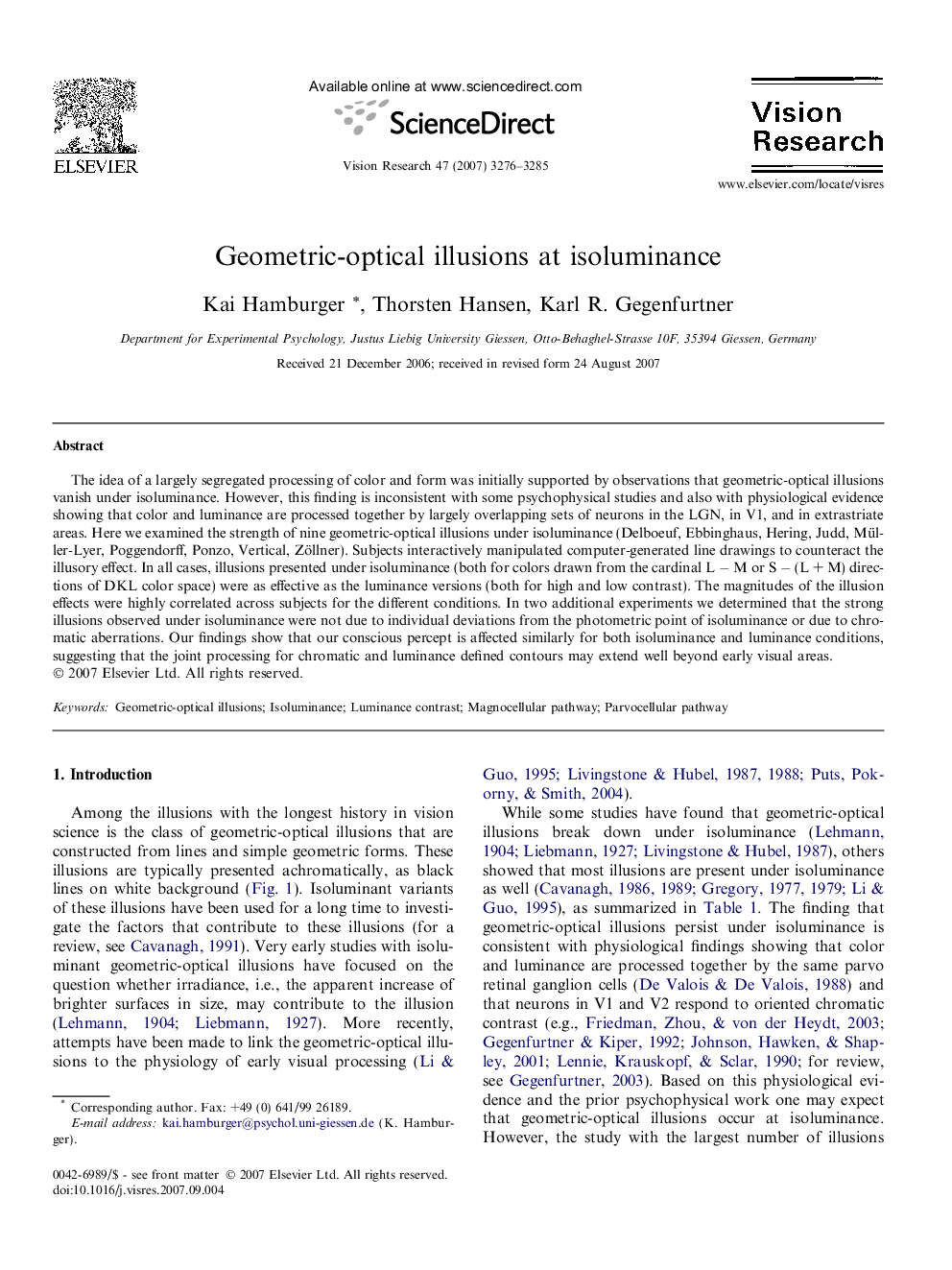| Article ID | Journal | Published Year | Pages | File Type |
|---|---|---|---|---|
| 6203952 | Vision Research | 2007 | 10 Pages |
The idea of a largely segregated processing of color and form was initially supported by observations that geometric-optical illusions vanish under isoluminance. However, this finding is inconsistent with some psychophysical studies and also with physiological evidence showing that color and luminance are processed together by largely overlapping sets of neurons in the LGN, in V1, and in extrastriate areas. Here we examined the strength of nine geometric-optical illusions under isoluminance (Delboeuf, Ebbinghaus, Hering, Judd, Müller-Lyer, Poggendorff, Ponzo, Vertical, Zöllner). Subjects interactively manipulated computer-generated line drawings to counteract the illusory effect. In all cases, illusions presented under isoluminance (both for colors drawn from the cardinal L â M or S â (L + M) directions of DKL color space) were as effective as the luminance versions (both for high and low contrast). The magnitudes of the illusion effects were highly correlated across subjects for the different conditions. In two additional experiments we determined that the strong illusions observed under isoluminance were not due to individual deviations from the photometric point of isoluminance or due to chromatic aberrations. Our findings show that our conscious percept is affected similarly for both isoluminance and luminance conditions, suggesting that the joint processing for chromatic and luminance defined contours may extend well beyond early visual areas.
